Tracy L. Schmidt | Originally published in GameKeepers: Farming for Wildlife Magazine. To subscribe, click here.
In deer hunting, success invariably favors the prepared person. Think about that for a moment: How often have you entered deer season completely ready? When you do it feels so good to be out there. Even when we don’t find success, that preparedness brings a feeling of contentment and confidence. Knowing that all of our gear is in-order is a big key to that inner satisfaction The myriad of gear we use as hunters calls for varying degrees of off-season care. Following are what many of the most successful hunters consider to be the top five categories for systematic cleaning, drying and storing hunting gear which includes everything from optics to clothing.
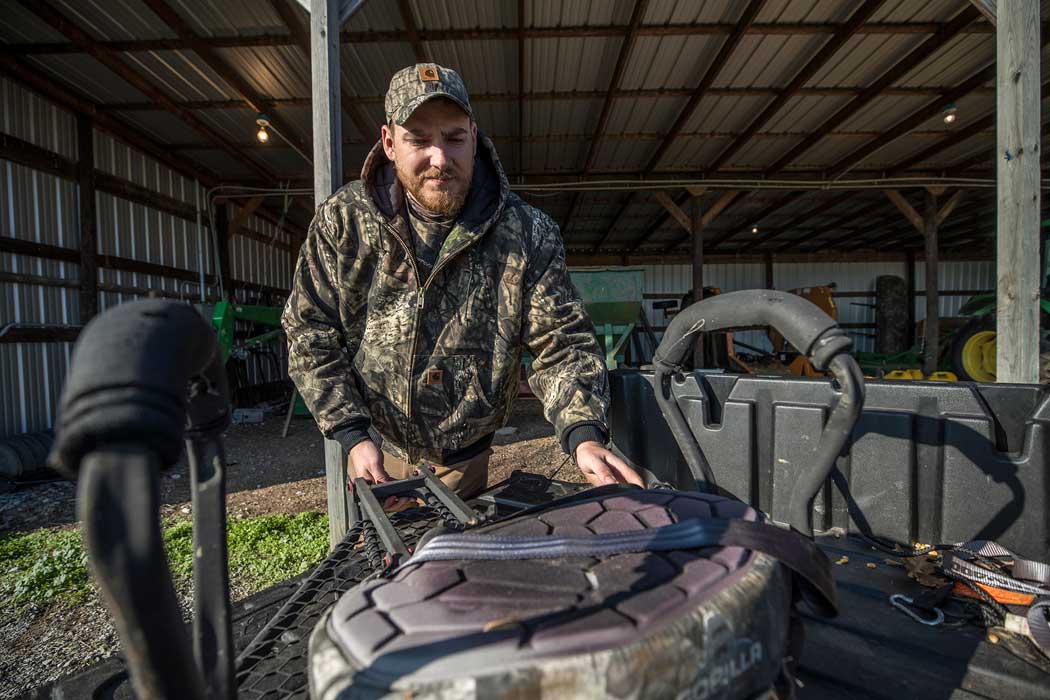
Clothing Concerns
We are primarily bowhunters in our house, so it’s a given that we are “scent-control freaks.” Keeping our hunting clothes scent-free is a year-round commitment. Yes, we take extra precautions during hunting season, which now includes the use of ozone-treated clothing bags and special outside storage precautions. The off-season is a time when we sort everything — early-season camo shirts, pants and jackets; mid-layers, socks and thermal wear; and the bulky cold-weather bibs, jackets, etc
Once everything is sorted, we have a laundry party, usually on a Saturday. All clothing gets washed in Scent Killer Gold laundry detergent, dried thoroughly in our scent-free dryer (we never use scented dryer sheets, even on our regular clothing) and stored in Rubbermaid tubs, special scent-free garment bags and other assorted seal-tight containers. It’s important that your clothing is dried thoroughly. Otherwise, when you seal it in a container, you then start a chemical process which begins creating unwanted foreign odors.
It’s important to note that we not only use scent-free dryer sheets year-round; we also use scent-free laundry detergent. That’s crucial in keeping hunting clothes truly scent-free. If you use scented laundry detergent on your street clothes, it’s wise to run your washing machine at least one full cycle with Scent Killer detergent BEFORE washing your hunting clothing. I recommend washing a load of jeans or bath towels in scent-free detergent. This will help rid the wash-tub of excess odors before you put your hunting clothes into the wash. A final tip on doing the laundry: Be sure to turn your camo clothes inside-out when washing them. This helps the camouflage patterns stay crisp and colorful.
Binoculars and Rangefinders
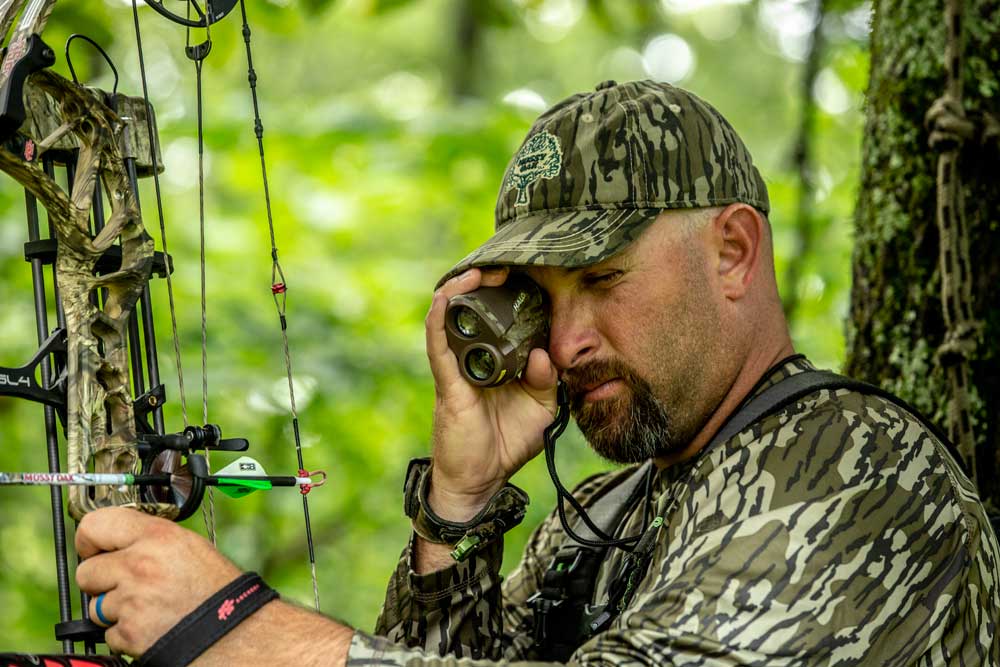
We all spend good money on our optics, and it’s only prudent to make sure we take care of them so we get years of service out of them. Optics need to be stored in a moisture controlled environment. What’s worked for us is a recycled office filing cabinet (think the 5-foot version) with a moisture-wicking Peet dehumidifier. This cabinet serves as a multi-functioning storage area for a variety of hunting gear. All optics should get a thorough cleaning before off-season storage. This means blowing out all of the eyecups and lenses with a few puffs from the air compressor. Shy away from the canned air that is commonly used on computer equipment. Canned air includes distillates, which can remove optical coatings. Next, use a soft optics brush or cloth to remove excess dirt or grime. A light coating of lens cleaner and conditioner is all that’s needed before drying everything off for storage. I cannot stress “dry” enough. Never put your binoculars or rangefinder back in their cases if there is any moisture on them (or on the cases). The key to cleaning any of your optics is to remove the dust first, then proceed with cleaning. If you don’t remove dust and debris, you can unintentionally scratch your optics when trying to clean them.
Archery Equipment
Today’s bows aren’t as temperamental as the two-wheel compounds we shot years ago. My first bow was a Golden Eagle SparrowHawk set at only 35 pounds of draw weight. It worked great, but we learned that it could easily become out of tune from season to season. Limbs and limb pockets can expand and contract on any bow if it’s left in an area (think garage) prone to hot and cold fluctuations. With that in mind, we keep all of our bows in the house in a temperature- and humidity controlled room. Bows can take up a lot space, obviously, so we hang our’s from ceiling hooks. Make sure to NOT lean your bow in a corner or in a closet. The uneven pressure can cause limbs to twist. Be careful in how you hang your bow if you take this route. Make sure the bow is either hooked straight to the wheel up and down, or underneath the wheel (from the limb). This helps prevent unnecessary friction against the moving parts, which could cause timing problems if the bow is left to hang until next fall.
Bowstrings should always receive wax periodically and the end of hunting season is a great time to give them a good covering. If you’re an archer you likely already know, it’s very easy, just get yourself some wax (it comes in a tube like lip balm) and apply a thin coating to the entire bowstring. Cycle your bow once or twice, and the wax will work its way across the entire string.
If you’ve noticed any squeaks in your bow, now is the time to address those as well. There are lubes and oils that will work, but what we’ve found works even better is a quick puff of powdered graphite. It works wonders on eliminating those little deer-spooking “noise gremlins!”
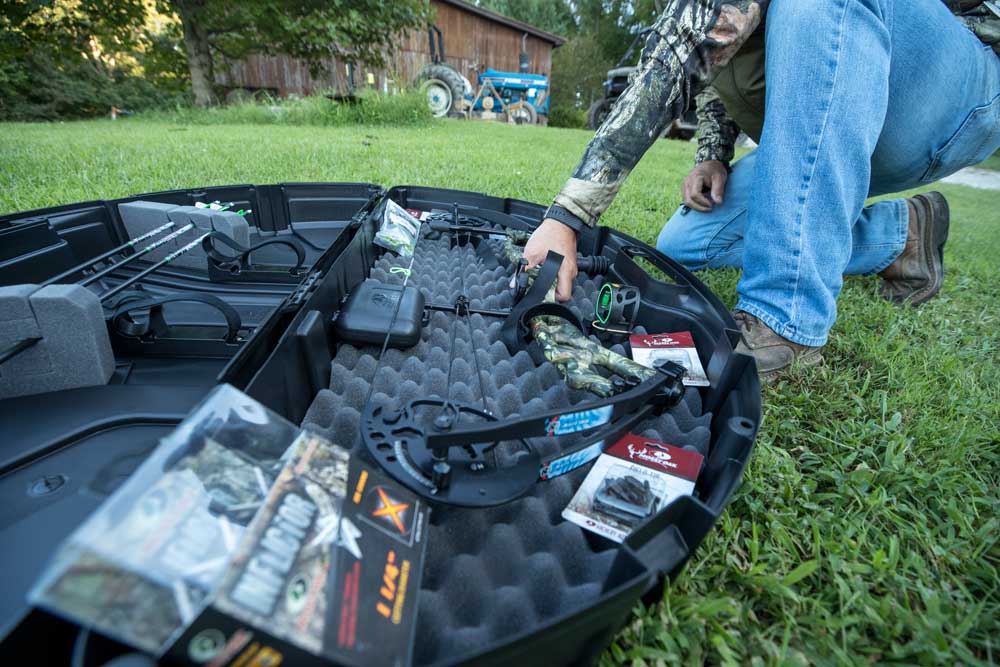
When first started bowhunting, we would turn the limb bolts out a few turns to take some of the pressure off the bow’s limbs, sting and eccentrics during off-season storage, but this is not a concern with today’s equipment. When in doubt, visit your local pro-shop and have your rig inspected.
What about your broadheads? Good question! We store all of our broadheads in a separate storage container and have them arranged by style (cut-on-contact or expandable), and we also inspect each one for sharpness. My husband is a real stickler on blade sharpness, as every archer should.
A sharpness test that he drilled into my head years ago involves a wide rubber band. Simply take the rubber band and pull it taught between your thumb and forefinger. Touch the broadhead's blade to the rubber band; the band should snap easily without applying much force. If you have to scissor the blade back and forth across the band, the blade isn’t sharp enough. DO NOT USE THIS BROADHEAD WHEN HUNTING!
Some folks will claim that you cannot make a factory broadhead blade sharp once it becomes dull from oxidation (just sitting in your quiver) or use (in and out of a quiver).
We disagree. A simple Smith’s or Outdoor Edge sharpener will put a razor’s-edge back on most broadhead blades, especially the long-blade expandables. Don’t overdo it; a few laps of the blade across the sharpener should do the trick.
Treestands, Blinds and Accessories
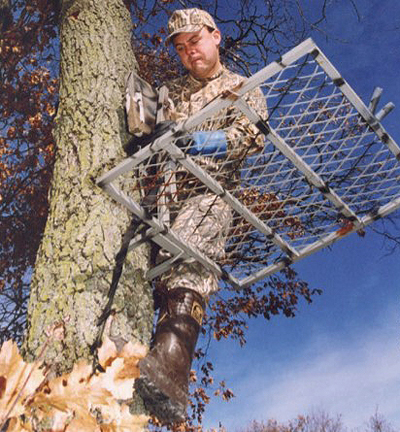
loosened. Otherwise during the spring and summer, the
tree will grow around, into or out of the treestand’s
fastening system.
If you are sensing a theme to our off-season regiment…a lot of work - well, then you’d be correct! It takes us the better part of two solid weekends to put everything up until next year. Archery targets aren’t the only things brought in from outside. We take down every one of our treestands as well. It is understandable that some folks don’t go to these extremes, but we do out of an ultra-paranoid view of what might happen if we leave them out. Weather alone can wreak havoc on fasteners, cables and hasps. The cold winter weather here in the north also has a way of contracting metal connections, leaving them prone to damage.
A bigger concern with leaving a treestand in the tree is the fact that when the tree grows in spring it will expand just enough to make the stand’s chain or belt nearly impossible to remove the next hunting season, or prone to failure and possible sever injury for the hunter. This isn’t safe. Some hunters we know will go out and loosen the chains and belts to allow for tree expansion. We prefer to just remove the stands, inspect them for loose or worn parts, and store them in an outbuilding until the following July or August. We have fewer than a dozen stands to tend to, so this makes the job manageable.
Outside of replacing nuts, bolts and washers, be sure to only use replacement parts made specifically for your stand (cable assemblies, seat brackets, etc). Don’t try to fix a stand with makeshift parts. It’s not worth the potential risks involved. Stand manufacturers are really good about providing replacement parts at very reasonable prices. Always be on the lookout for replacing some of your “fleet,” too. Stands shouldn’t be expected to last forever. After the hunting season is the best time to find great deals.
As for ladder stands, the bigger styles obviously cannot be taken down every year, at least not very easily. Maintaining these stands is more than a one-person job. Be awfully careful when putting them up and always use the support straps that come with the stand.
If you want to see how fast you can ruin a good pop-up blind, put it away for the winter without drying it out first. We learned this the hard way years ago the first year I had a blind for bowhunting. Most of today’s blinds are poly-fabrics, so they do hold up a little better than canvas in this regard, but it is key to pop-up the blind and let it dry outside if at all possible. During wet weather, pop up the blind in your garage or an outbuilding and let it dry. Once dry, fold it up and put it back in its carrying case. I prefer to spray mine down with Wildlife Research Center’s Cedar Scent Storm or Scent Killer Gold before storing it. It’s just a habit that I’ve gotten into over the years and I believe it helps greatly.
Firearms and Ammo
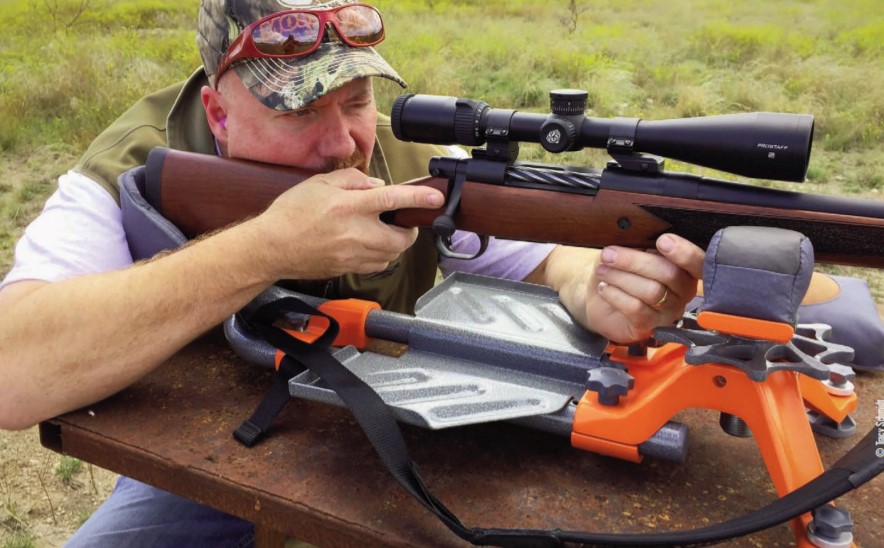
It’s probably safe to say that most gun-hunters do not thoroughly break down their rifles and clean them from muzzle to action. If you do, you’re in the upper one percent. Nothing can ruin a rifle faster than putting it away damp. It only takes a few flecks of rust to ruin the fine rifling in the barrel. I leave these chores up to my husband. At a bare minimum, he will apply solvent and run a wire brush down the barrels until they’re clean. He insists on using oil-protection wipes for all the external parts. He’s also not too proud to pay our friend (who happens to be a gunsmith) a few bucks to clean the guns for us during years in which he is traveling.
Ammo should be stored in a dry environment. Avoid storing in your basement if you have humidity issues. Excess humidity can cause mold to grow on casings, which can cause problems with ejectors and with bullet seatings. We never store our ammo with our guns for safety reasons (children in the house); so we’ve acquired an extra lockbox that is used specifically for ammo. The same goes for our blackpowder supplies. We don’t shoot our muzzleloaders all that often, so my husband buys new powder every year and disposes of old powder rather than storing it for the next year. Yes, this is an extra expense, but blackpowder can be unstable if not stored under precise conditions. It’s just not worth the worry to us to keep it lying around the house.
Conclusion
The freezer is again filled with venison steaks, roasts, chops and summer sausage. We are happy because we cleaned up, reorganized and stored our gear. It’s work, yes, but it’s also fun because you know the next success story is just a few months in the making. It also makes the weeks leading up to hunting season so much easier – as they say, “An ounce of prevention is worth a pound of cure.” Now we get to spend our time strategizing where we are going to hang our stands this summer.





























